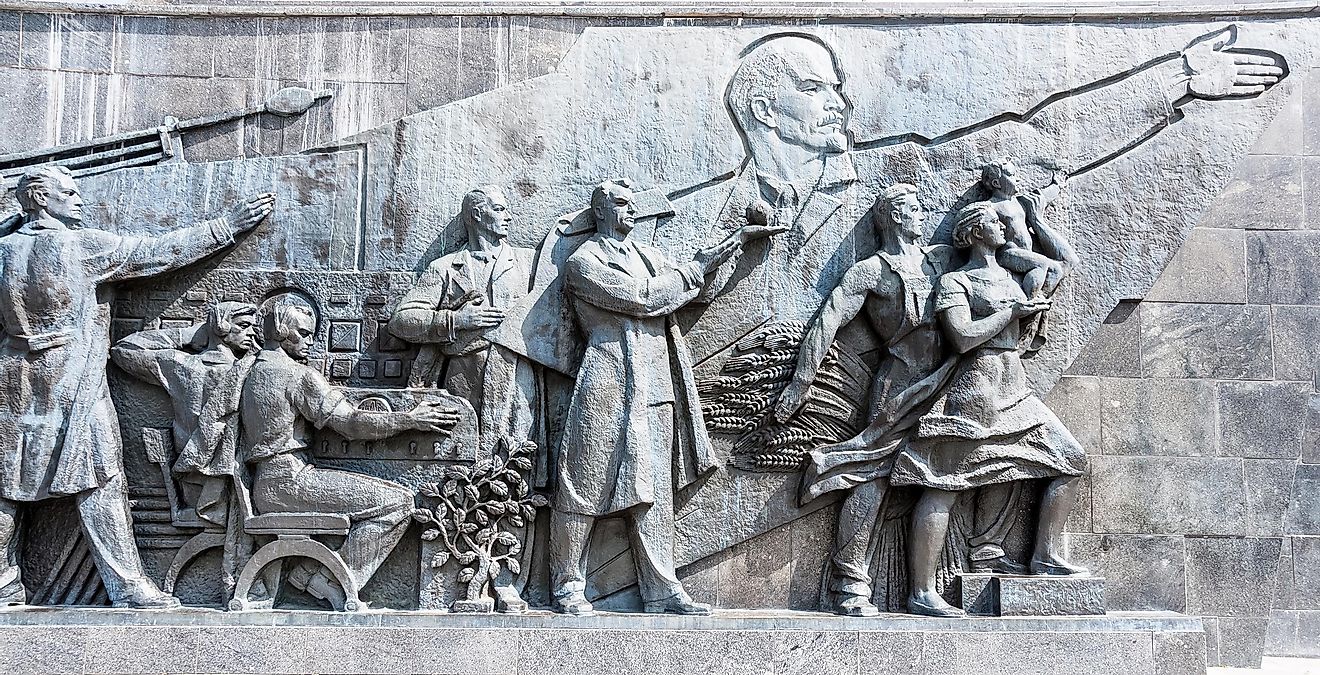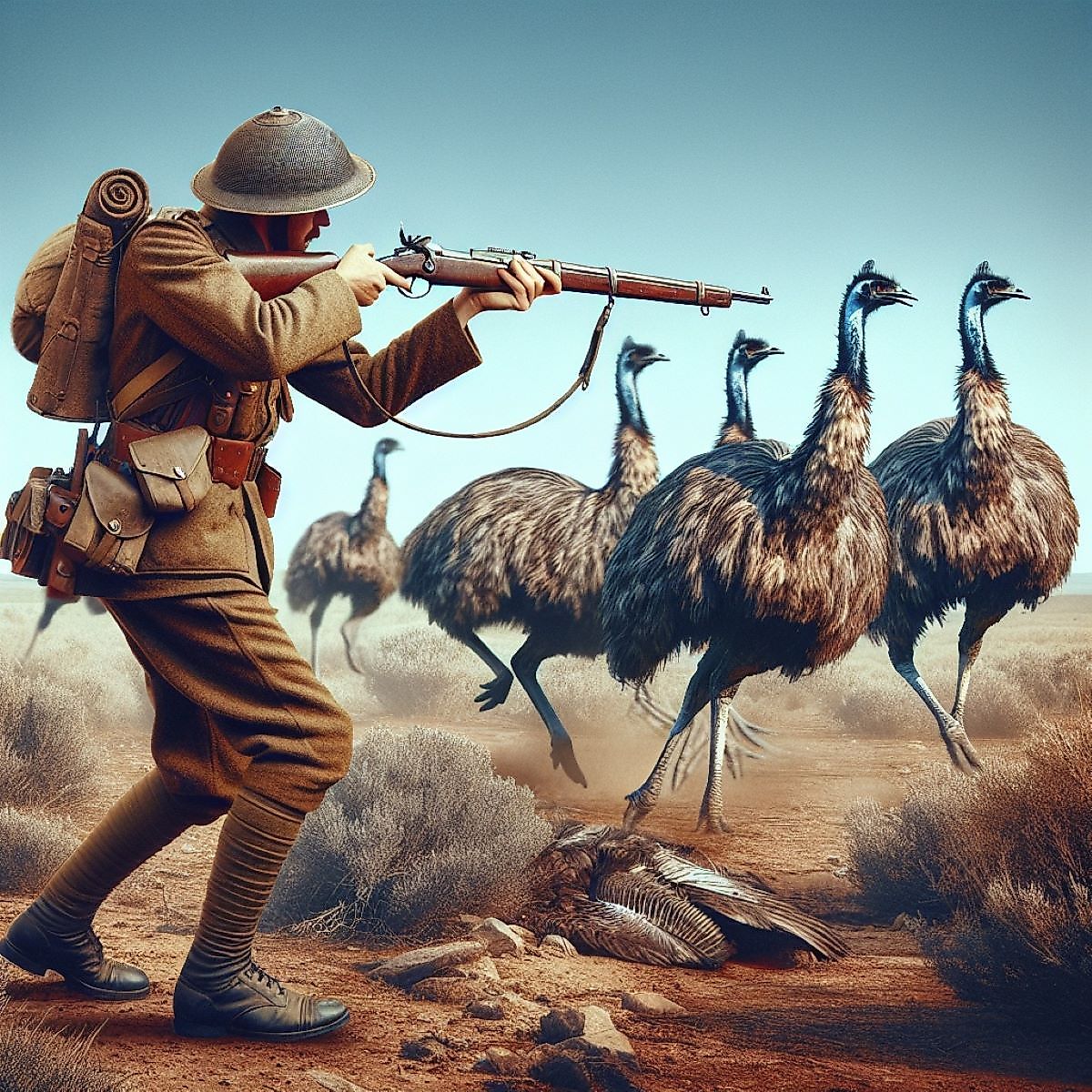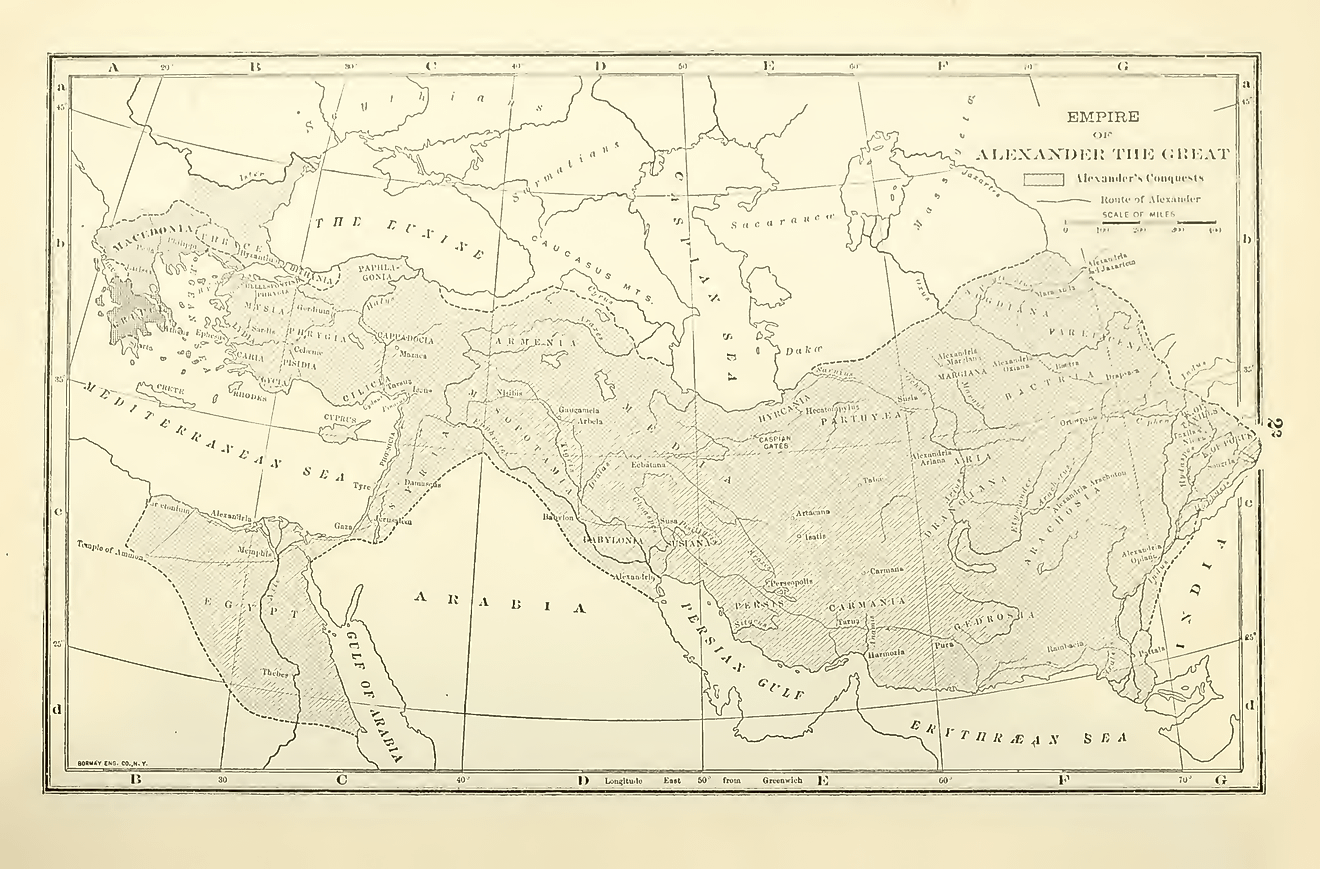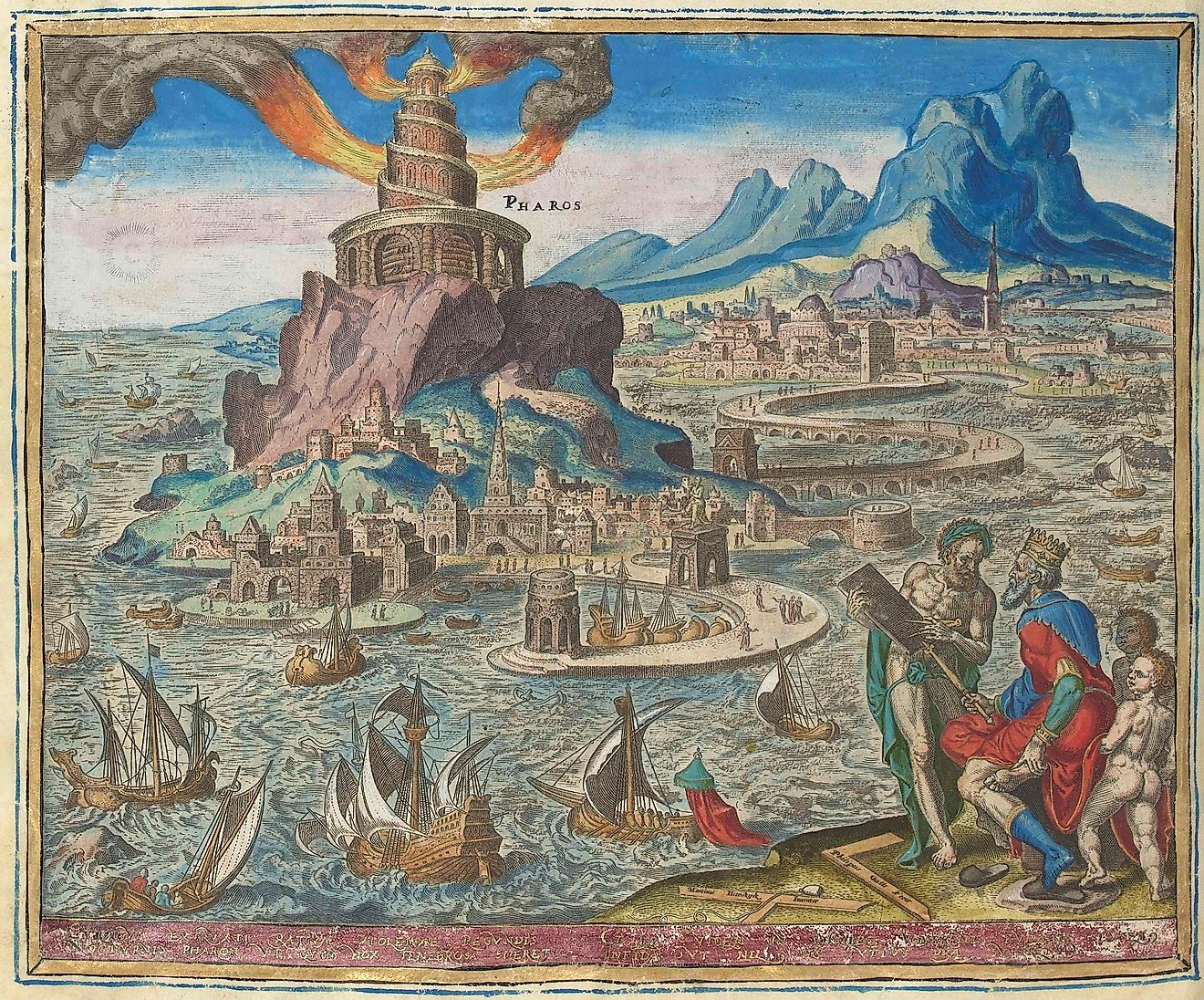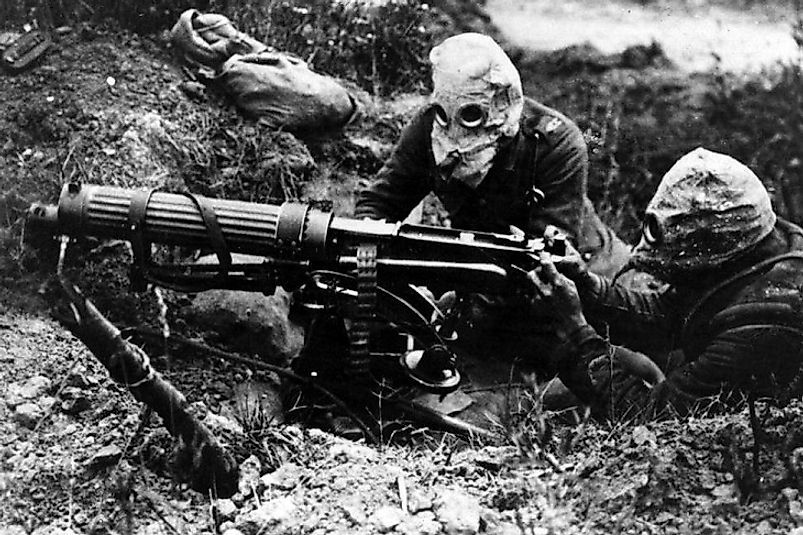
Major Battles Of World War I (WW1)
On June 28, 1914, Archduke of the Austro-Hungarian Empire Franz Ferdinand was shot dead by Serbian nationalist Gavrilo Princip. This assassination set off a chain of events that led to the First World War (also known as the Great War) from 1914 to 1918. It was the deadliest conflict in world history up to that point; between 15 to 22 million people died, and another 23 million were injured. Furthermore, the war fundamentally reshaped the geopolitical landscape. For instance, self-determination became a norm in international relations--at least for European countries. The maps of the Middle East and Africa were also redrawn. Finally, Great War-based grievances, particularly in Germany and Italy, ultimately led to the conditions that made the Second World War possible.
The enormity of this conflict makes capturing all of its aspects in a single article difficult. However, explaining some key battles is one way to provide a semi-thorough overview.
First Battle Of The Marne
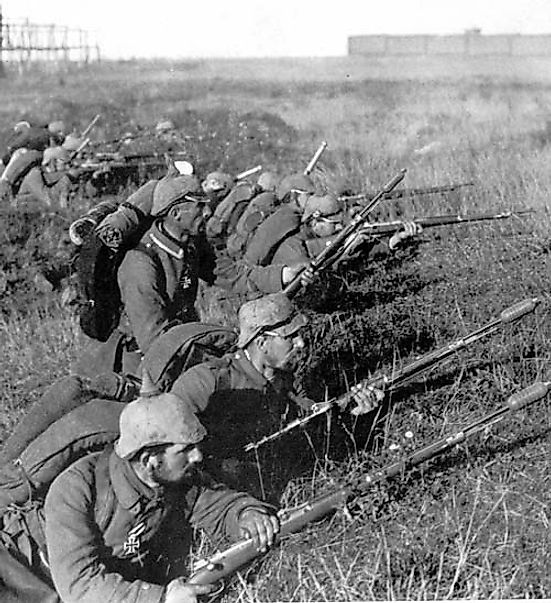
Following the assassination of the Archduke, Austria-Hungary declared war on Serbia. Thereafter, Russia, a Serbian ally, mobilized against Austria-Hungary. This was followed by Germany mobilizing against Russia. By the end of 1914, all the major European powers were involved in the conflict. The United Kingdom, France, and Russia made up the Allied Powers (or Triple Entente) on one side, and Germany, Austria-Hungary, and the Ottoman Empire made up the Central Powers on the other.
With Germany facing France in the west and Russia in the east, this meant that a war on two fronts was likely. Therefore, while Russia was still mobilizing, the German high command hoped they could quickly beat the British and French forces before shifting their focus to Russia. Based on a modified version of the Schlieffen Plan, the Germans thus attacked France through Belgium in the summer of 1914 in hopes of a quick submission. Despite some initial success, an Allied counteroffensive in the First Battle of Marne forced the Germans to retreat in September. When combined with Russia mobilizing much quicker than expected--entering the war within two weeks--this meant that Germany would indeed be fighting a war on two fronts.
Battle Of Gallipoli
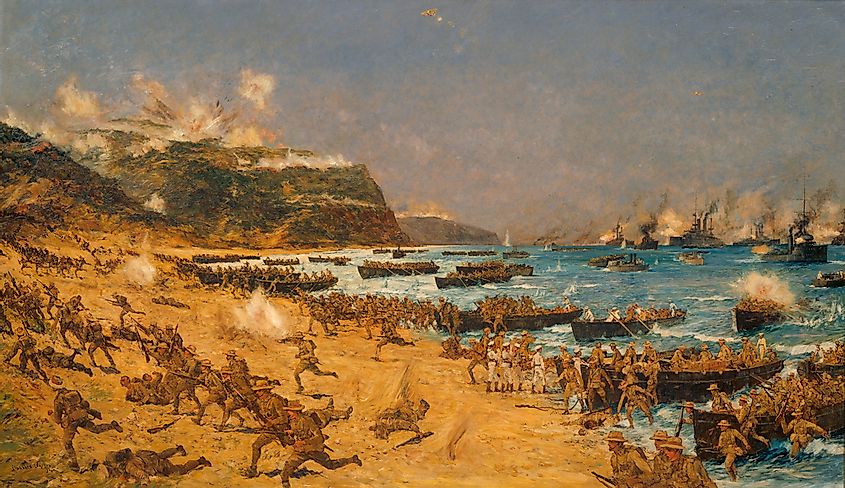
In early 1915, Russia asked Britain and France for help. After fighting the Ottomans in the Caucasus for months, they thought that an Allied attack elsewhere in the Ottoman Empire would relieve pressures on this front. Britain thereby decided to attack the Dardanelles, a narrow strait that marked the separation between Europe and Asia. The head of the Royal Navy, Winston Churchill, thought that forcing open the strait could then allow the British to seize the Ottoman capital of Istanbul. As would soon be apparent, these plans were overly ambitious and based on incorrect assumptions about the strength of the Ottoman Empire.
In February 1915, British ships began their assault. With Ottoman mines proving problematic, it became clear that forcing open the strait would not work. Therefore, in April, British troops attacked the Gallipoli peninsula, hoping that controlling the land would facilitate an easier passage through the strait. However, cliffs provided the Ottomans with a significant height advantage. When combined with a lack of cover on the beaches, this meant that many Allied soldiers were immediately mowed down. Those who survived began digging in an attempt to make trenches. Finally, after about a year of no meaningful progress and 500 000 causalities on both sides, Allied troops were evacuated in January 1916.
Battle Of Verdun
By late 1914 to early 1915, the war on the Western Front had turned into a deadly stalemate. However, German general Erich von Falkenhayn believed that, while defeat through a decisive battle was no longer possible, a sufficient number of causalities could force the French to surrender. Therefore, in an attempt to draw out as many French troops as possible, Falkenhayn planned to attack the city of Verdun. Indeed, Verdun's height made it so that if the Germans took it, they would gain a major strategic advantage, making it necessary for the French to defend the city with everything they had.
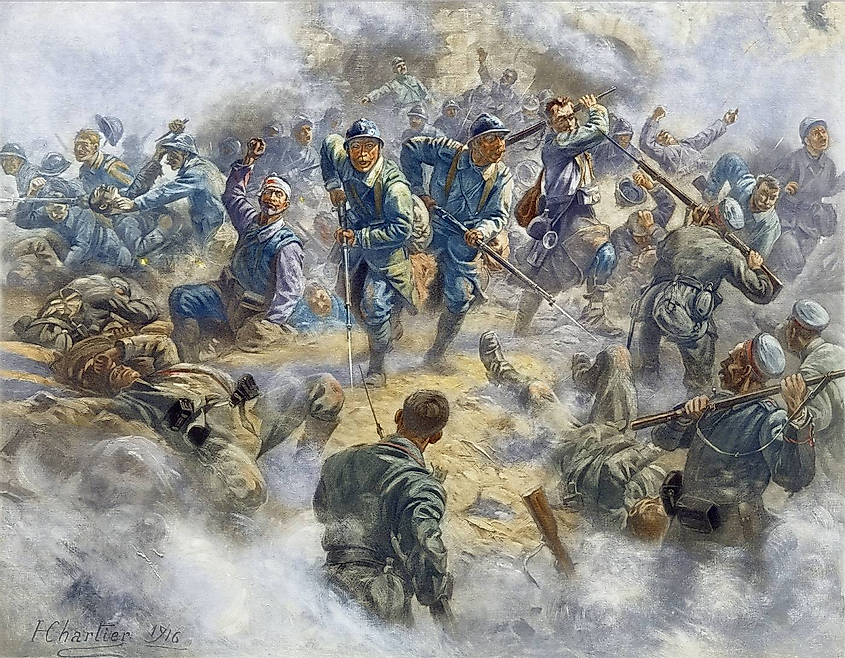
The first phase of the battle began on February 21, 1916, with German artillery bombardments along the 19-mile French front. Within the first three days, the Germans had captured Fort Douaumont, a key defense that had protected Verdun for centuries. Their advances then slowed to a crawl as French artillery hit German trenches. By May, talk of an imminent British attack on the Somme River made it, so both sides had a vested interest in ending the battle. Nonetheless, fighting continued throughout June, July, and August. The final German offensive occurred on September 3, 1916, yielding no gains. Thereafter, the French launched a counteroffensive, and by December, they had pushed the Germans from all their previously held positions.
Verdun saw 700 000 causalities and 300 000 deaths. It also became a symbol of the pointlessness of the Great War, with hundreds of thousands of lives being lost for no real reason. Finally, for the French, the Battle of Verdun was and still is held up as an example of their resilience.
Battle Of The Somme
![Thiepval Memorial to the Missing of the Somme is a war memorial to 72,337[1] missing British and South African servicemen who died in the Battles of the Somme](/r/w768/upload/9e/22/10/thiepval-cimetie-re-derrie-re-me-morial-1.jpeg)
The Battle of the Somme was fought between July 1 to November 18, 1916. Much like Verdun, this battle was intended to end the war by means of attrition, only this time it began with an Allied offensive. Following a week of artillery bombardment, Allied infantry attacked the north of the River Somme. On the first day of this assault, 20 000 British soldiers were killed, the largest single-day death toll in British military history. Furthermore, after initially making solid progress, the British and French got bogged down in trench warfare, and throughout the next 141 days, they only advanced seven miles. Then, following the Battle of the Ancre from November 13 to November 18, the Allies were completely stopped due to poor weather and increasingly difficult terrain.
Despite resulting in the largest territorial gains by either side since the First Battle of Marne, the legacy of the Somme is one of futility. After nearly a million causalities and 300 000 deaths, neither side made any meaningful breakthroughs. Moreover, the end of the war appeared no closer.
The Kerensky Offensive
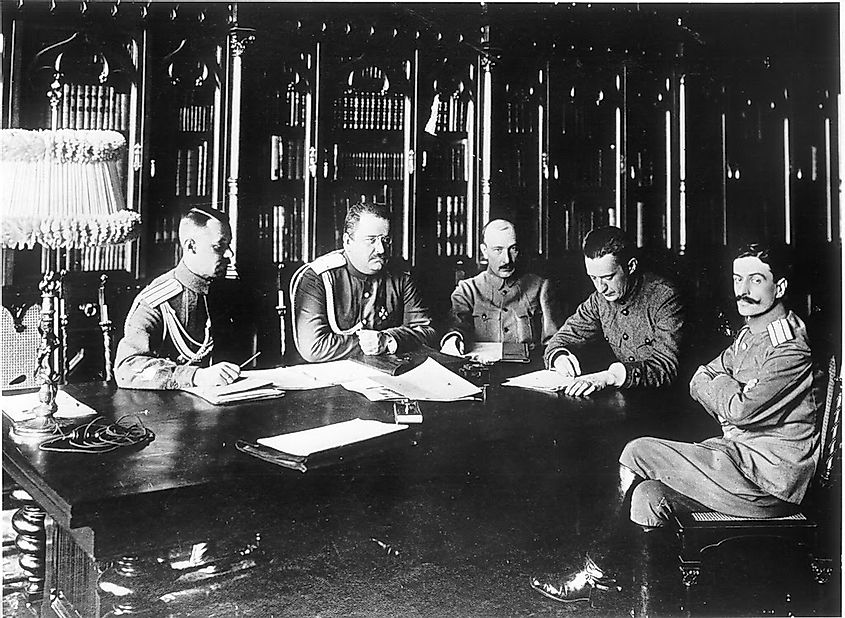
World War I was particularly difficult for Russia. Already unpopular before the conflict, by early 1917, the Tsar was in his death throes due to domestic unrest and economic turmoil. Thus, in February of that year, a revolution occurred in which the Russian monarchy was overthrown and replaced by a provisional government. Headed by a lawyer and revolutionary named Alexander Kerensky, he was now responsible for military operations. Despite most Russians wanting to get out of the war, Kerensky assured the rest of the Allied Powers that he would go through with a spring offensive, which had been promised under Tsarist rule. As would soon be clear, this Kerensky Offensive (also known as the June Offensive) was ill-timed and poorly conceived.
The attack began on June 29, and by July 1, Russian troops had captured Koniukhy, a small Ukrainian village. However, as was often the case, a stalemate quickly emerged. Given the poor morale of many Russian soldiers, this gridlock did not last, and on July 16, the offensive completely collapsed. By early August, the Russian line had been pushed back 150 miles.
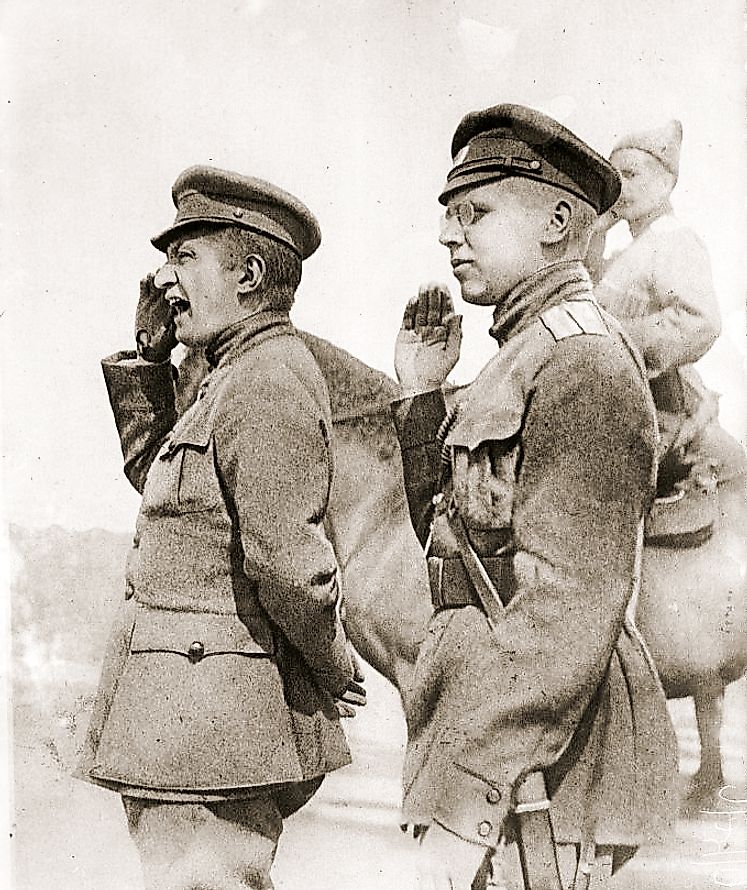
This military disaster had profound consequences domestically. For instance, throughout the offensive, Kerensky dealt with uprisings from communist and non-communist forces alike, who were partly inspired by this continued military action. Furthermore, following the failed attack, Kerensky replaced the army's commander-in-chief with Lavr G. Kornilov. Kornilov then attempted to overthrow Kerensky the following month. Finally, the Kerensky Offensive contributed to general instability in Russia, helping pave the way for the Bolshevik Revolution in October.
Battle Of Passchendaele
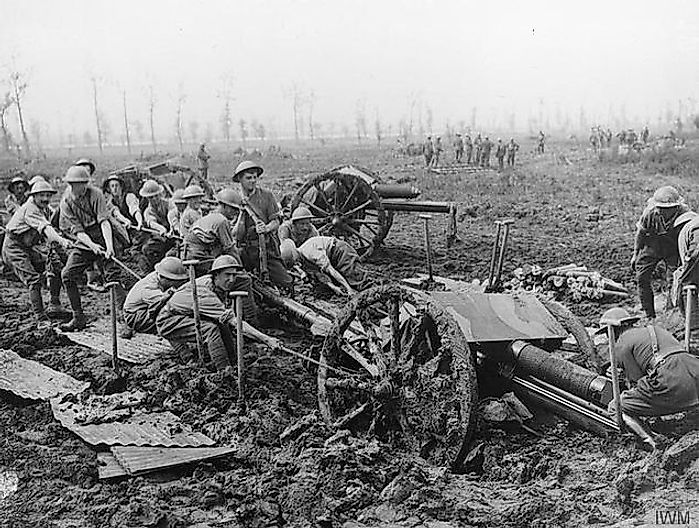
In response to German submarine attacks and mutinies by French soldiers, General Douglas Haig thought that the British needed to mount a counteroffensive. He, therefore, decided to attack the Belgian city of Ypres, which had been under continual contestation since the beginning of the war. What followed was the Battle of Passchendaele (also known as the Third Battle of Ypres) from July 31 to November 10, 1917.
On July 31, British troops and tanks assaulted German trenches, only to get halted almost immediately. Intense shelling and torrential rain quickly transformed the landscape into something apocalyptic, with nothing but destroyed trees, holes caused by explosions, and mud as far as the eye could see. Unwilling to accept defeat, Haig ordered a new offensive in September, resulting in some small gains at the expense of extreme losses and injuries. Indeed, many soldiers suffered severe burns due to the use of mustard gas. Nonetheless, more attacks occurred in late October, leading to even more losses, particularly amongst the Canadian divisions. Finally, after more than three months and advancing only five miles, Haig declared the offensive over after taking the village of Passchendaele. By the end, both sides saw at least 250 000 casualties--a high price to pay for almost no gain.
Battle Of Cambrai
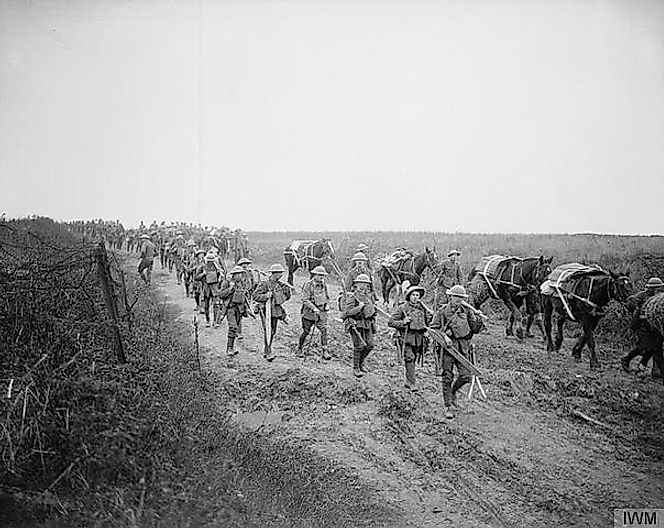
The Battle of Cambrai occurred from November 20 to December 7, 1917. Fought between the British and Germans over the German supply center of Cambrai, it marked the first full-scale usage of tanks in combat. While tanks had been used previously, they often broke down and were more of a hindrance than an advantage. But in Cambrai, they proved massively successful, quickly ripping through the German defenses. However, bad weather and a lack of adequate reinforcements made it so the Allies were not able to take advantage of this opening, allowing the Germans to mount a counterattack. In total, the Battle of Cambrai saw 76,000 British and 55,000 German causalities, with 10,000 and 9,000 killed, respectively.
German Spring Offensive
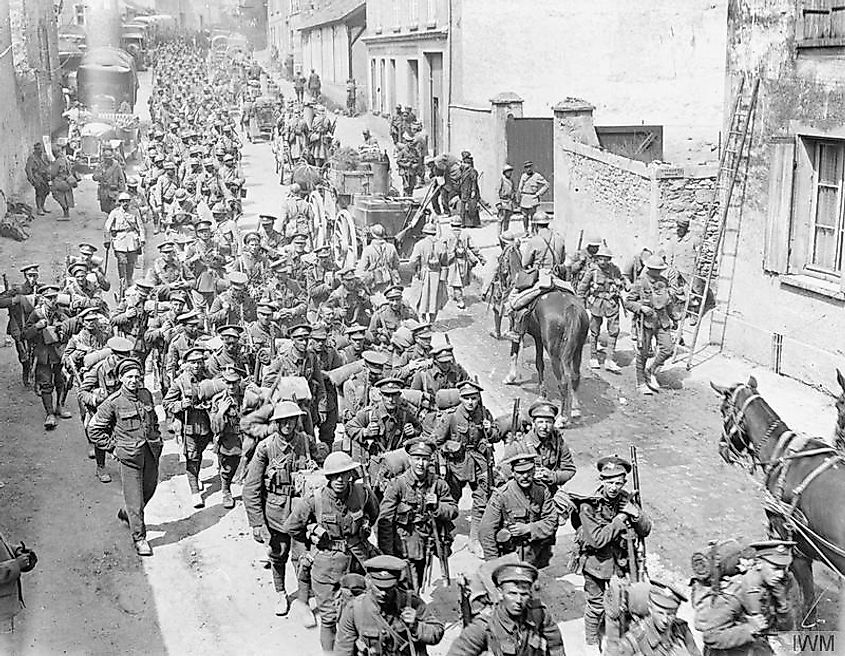
Concerned about the United States' entry into the war, General Erich Ludendorff knew that Germany needed to launch an offensive before the Americans tipped the scale in the Allies' favor. Therefore, on March 21, 1918, Germany began its last major attack of the First World War, the German Spring Offensive.
Despite making the most significant advances since 1914, logistical issues plagued the German Army. In an attempt to move quickly, many soldiers carried only the bare essentials. As their supply lines stretched, replenishing these necessities became more and more difficult. None of this was helped by the 250 000 American troops that had joined the war by the end of March. Thus, despite their territorial gains, Germany lost over a million soldiers between March and July. The Allies subsequently took advantage of the weakened German Army, pushing them back in the Hundred Days Offensive from August to November. When combined with domestic tumult, Germany was forced to sign an armistice on November 11, 1918.
The armistice marked the end of the Great War. However, it was controversial in Germany; many believed the army had been "stabbed in the back" by the politicians of the forthcoming Weimar Republic, who were presumed to be Jews and communists. This conspiracy theory provided the basis for much of the civil unrest that plagued Germany throughout the 1920s, planting the seeds for the rise of Nazism.
